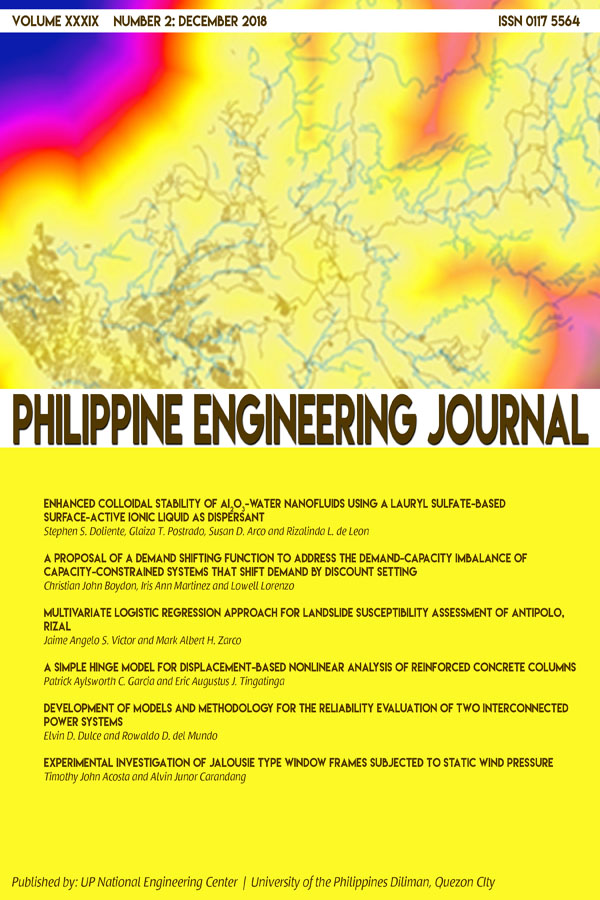A Simple Hinge Model for Displacement-based Nonlinear Analysis of Reinforced Concrete Columns
Abstract
Abstract – During strong earthquakes, reinforced concrete (RC) structures experience cyclic lateral loads that result to degradation in load-carrying capacity, and failure of columns in shear and/or flexure. This study presents a simple hysteretic hinge model that may be used in displacement-based analysis of RC columns, classified as flexure critical, shear critical, and shear-flexure critical, subjected to cyclic loads. The proposed hinge model made up of zero-length nonlinear springs can simulate the hysteretic behavior of reinforced concrete material in axial, shear, and flexure. The nonlinear parameters of the springs were derived from geometric and material properties of the column and estimated using Response-2000 software. Pushover analysis and response to cyclic loading were performed using the Open System for Earthquake Engineering Simulation (OpenSees) program and validated by comparing the force-displacement response of select forty-three RC columns available in the PEER Structural Performance Database. Results show that for the six rectangular columns, the numerical experiments using the proposed hinge model and the actual force-displacement curves gave R-squared values greater than 0.80 signifying good agreement of results. Therefore, it was concluded that the model can reasonably replicate nonlinear behavior of shear-, shear-flexure, and flexure-critical columns subjected to cyclic loading and, therefore, may be used to assess performance of actual RC columns.
Keywords—hinge model, reinforced concrete, performance assessment, OpenSees, column


